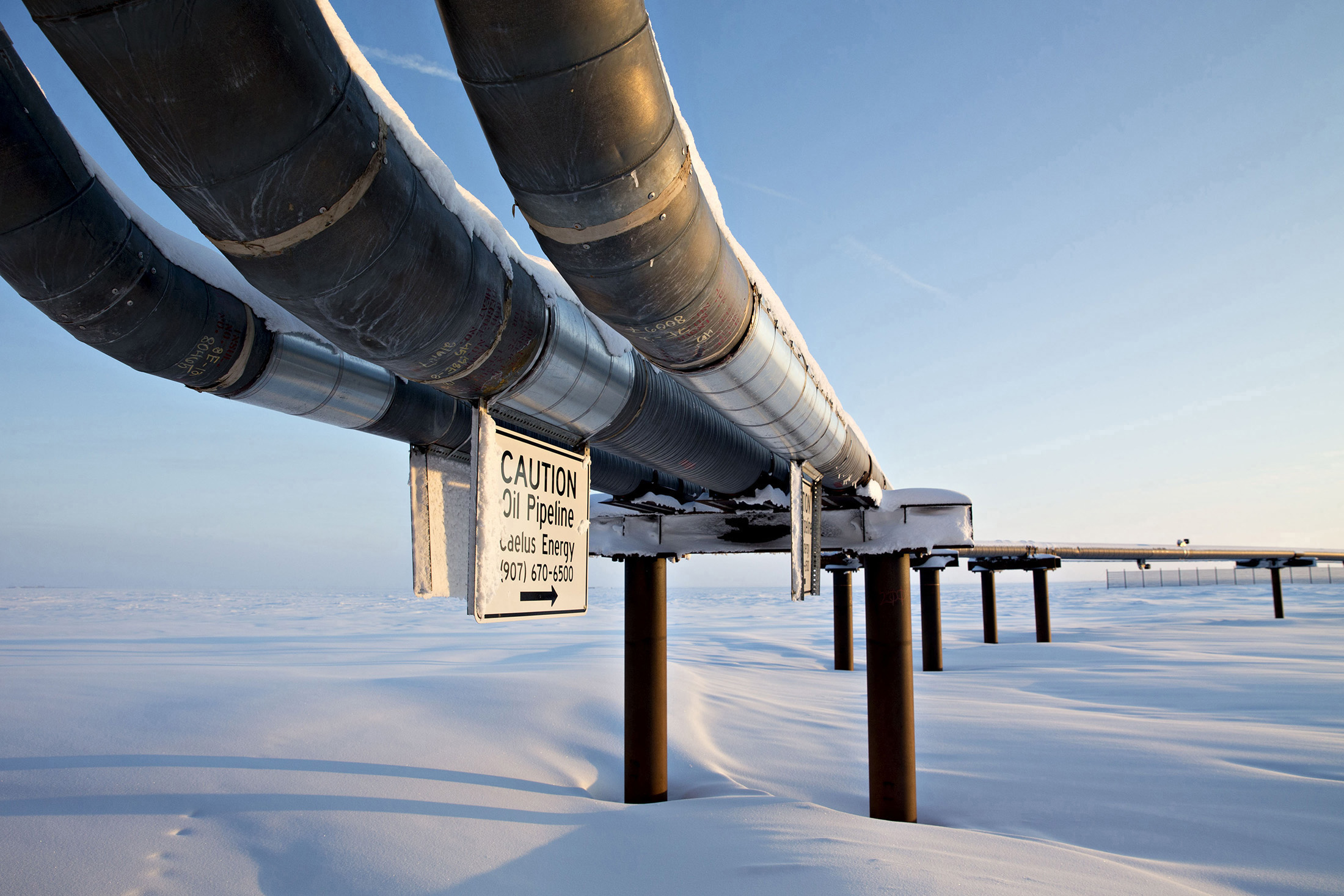It’s ‘open season’ for those interested in buying or selling gas as part of Alaska LNG project

Probing interest in Alaska’s $43 billion gas-export project, the state gas line corporation on Thursday began asking North Slope natural gas owners and potential gas customers how much gas they might be willing to ship or buy.
The solicitation, a milestone in the development, is being described by officials with the Alaska Gasline Development Corp. as a lighter version of an “open season,” a process to determine who might participate in a project if one is built.
The information will help the agency determine how it might phase in the giant project, starting smaller than originally conceived but growing from there.
The agency will initially seek nonbinding letters of interest. Later, it wants definitive agreements, AGDC officials said during a meeting on Thursday.
The Alaska LNG project, if it’s ever built, will ship North Slope natural gas to Nikiski in an 800-mile pipeline. The gas will be processed into liquefied natural gas and shipped to Asia in oceangoing tankers.
AGDC officials have said potential gas buyers from Asian countries are interested in the project. But no commitments have been signed.
ExxonMobil, BP and ConocoPhillips, the major owners of North Slope natural gas, have said they will make their gas available to the project, said Lieza Wilcox, AGDC’s vice president of Commercial and Economics.
Other producers that also own North Slope gas can also sign a letter of interest, such as Hilcorp Alaska.
The state corporation has been discussing the solicitation of interest with gas owners, said Keith Meyer, AGDC president. The corporation will propose shipping rates as part of the process.
Depending on the interest, the state may start the project with smaller liquefaction facilities in Nikiski than originally envisioned — “two train” instead of three.
The smaller, two-train option would cost $34 billion, while a three-train option would cost $43 billion.
Larry Persily, oil and gas adviser to Kenai Peninsula Borough Mayor Mike Navarre, said the solicitation process is “a test of the viability of the project.”
The state will seek nonbinding letters of interest from companies by Aug. 31. Companies that sign definitive agreements by May 31 will become foundation customers.
“Someone coming along later can’t get a better deal” than those anchor clients, Meyer said.
Last year, Gov. Bill Walker had proposed a Sept. 1 deadline to line up critical business partners before pulling the plug on the costly Alaska LNG project. More recently, he has said the date will offer the state a chance to evaluate interest in the project, but he hasn’t backed off the deadline.
Previous, unsuccessful efforts to create a North Slope gas project involved open seasons in 2010, before the Alaska LNG project was created.
One was held by TransCanada, working with ExxonMobil on a project that launched under Gov. Sarah Palin, and was eligible for state subsidies under the Alaska Gasline Inducement Act.
Denali, a BP and ConocoPhillips project, also held an open season.
Those open seasons fell under the purview of the Federal Energy Regulatory Commission because the projects would have shipped gas between states, from Alaska through Canada and to the Lower 48, or from the North Slope to Valdez where it would have been loaded into tankers. Although officials from both the TransCanada and Denali projects said they received interest during their open seasons, nothing ever came of it.
Back in 2010, when he was a Republican candidate for governor, Walker demanded that the expressions of interest in the TransCanada project be made public.
AGDC’s solicitation of interest doesn’t need FERC approval.
After 2010, changing market conditions — the shale boom in the Lower 48, which produced a glut of domestic natural gas — led the state and major oil producers to shift their attention to Asia. The state and three oil companies teamed up on the Alaska LNG project.
After a study last year raised concerns about Alaska LNG’s global competitiveness, the oil producers backed out of the project, leaving only the state.